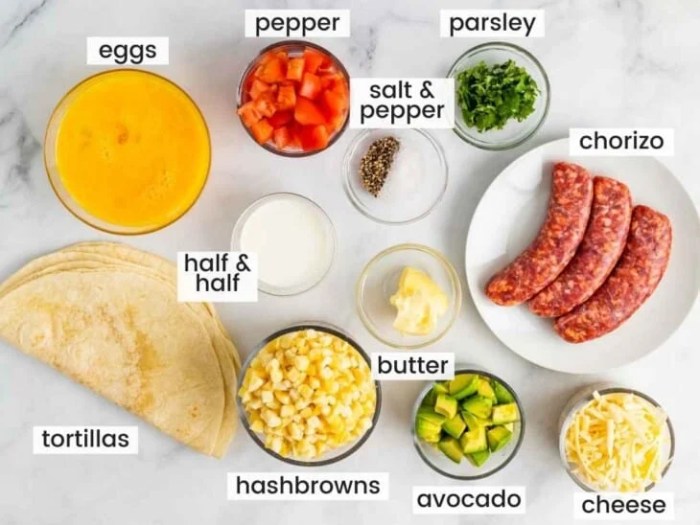Comparison with Other Bakery Items: Costco Croissant Nutrition Facts

Costco croissant nutrition facts – Costco’s bakery section offers a wide variety of tempting treats, making it easy to indulge. However, understanding the nutritional differences between these items is crucial for making informed choices about your diet. This section compares the nutritional profile of a Costco croissant to other popular bakery items available at the store, highlighting key differences and potential health implications of regular consumption.
Direct comparisons of nutritional information can be challenging due to variations in size and recipe changes over time. However, we can use general estimations based on typical Costco offerings to illustrate the relative differences in calorie, fat, and sugar content.
Nutritional Comparison of Costco Bakery Items
The following table provides a general comparison of calorie, fat, and sugar content for three common Costco bakery items: a croissant, a blueberry muffin, and a chocolate chip cookie. Note that these values are approximations and may vary based on specific product variations and serving sizes.
Costco croissants, while undeniably delicious, often pack a surprising caloric punch. Understanding their nutritional content is key to mindful eating, and comparing it to other breakfast favorites can be insightful. For instance, a quick look at the lucky charms nutrition facts highlights the significant sugar content in that cereal, a stark contrast to the primarily fat-based calories found in the Costco croissants.
Ultimately, both choices require careful consideration within a balanced diet.
| Item | Calories (approx.) | Total Fat (g, approx.) | Sugars (g, approx.) |
|---|---|---|---|
| Costco Croissant | 350-400 | 18-22 | 15-20 |
| Costco Blueberry Muffin | 300-350 | 12-15 | 25-30 |
| Costco Chocolate Chip Cookie (large) | 300-350 | 15-20 | 20-25 |
It is important to note that these are estimations and actual values may vary slightly. Always refer to the nutritional information label on the specific product for the most accurate data.
Key Nutritional Differences
The table above reveals some significant differences in the nutritional profiles of these bakery items. These differences have important implications for overall health and well-being.
- Fat Content: Croissants generally have a higher fat content than muffins or cookies, primarily due to the use of butter in the dough. This contributes to a higher calorie count.
- Sugar Content: While muffins and cookies often contain added sugars, the sugar content in croissants comes mostly from the naturally occurring sugars in the flour and the added butter. However, added sugar in muffins and cookies can still contribute significantly to daily sugar intake.
- Calorie Density: All three items are relatively calorie-dense, meaning they provide a significant number of calories per serving. Regular consumption of any of these items could contribute to weight gain if not balanced with other dietary choices and sufficient physical activity.
Health Implications of Regular Consumption
Regular consumption of any of these high-calorie, high-fat, and high-sugar bakery items can have several negative health implications. These include increased risk of weight gain, elevated cholesterol levels, increased risk of type 2 diabetes, and potential for other health problems associated with a diet high in processed foods and added sugars. Moderation is key when enjoying these treats.
Impact of Ingredients on Nutritional Value
Costco croissants, like many other commercially produced pastries, derive their characteristic flavor and texture from a specific combination of ingredients. Understanding the role of these ingredients is crucial to comprehending their nutritional profile, both its benefits and drawbacks. The high calorie and fat content are largely determined by the primary components: butter, flour, and sugar.The interplay of these ingredients significantly impacts the overall nutritional value.
The type of flour used, the amount of butter incorporated, and the addition of sugar all contribute to the final product’s calorie density, fat content, and carbohydrate profile. Furthermore, the presence or absence of other additives, such as emulsifiers or preservatives, can also influence the nutritional composition.
Butter’s Contribution to Calorie and Fat Content
Butter is a key ingredient contributing substantially to the croissant’s high calorie and fat content. Its high fat content, primarily saturated fat, directly increases the overall caloric density of the pastry. While butter imparts desirable flavor and texture, its saturated fat content is a potential health concern for individuals watching their cholesterol levels. Excessive consumption of saturated fat is linked to an increased risk of heart disease.
However, it’s important to note that butter also contains some beneficial nutrients, such as vitamin A and vitamin E. The amount of butter used in a Costco croissant directly correlates to its overall fat and calorie count. A higher butter content translates to a richer, flakier croissant but also a higher calorie and fat density.
Flour Type and its Impact on Nutritional Profile
The type of flour used—typically all-purpose or a blend—affects the croissant’s nutritional profile. All-purpose flour is primarily composed of carbohydrates, providing energy but offering limited micronutrients. The use of enriched flour adds some vitamins and minerals, but the overall nutritional value remains relatively low compared to whole-grain alternatives. Using whole-wheat flour, for example, would increase the fiber content and provide additional vitamins and minerals, although it would likely alter the texture and taste of the croissant.
However, whole-wheat flour’s lower gluten content may result in a less flaky croissant. The choice of flour type represents a balance between desired texture and nutritional benefits.
The Role of Sugar and Other Additives
Sugar, often added in the form of granulated sugar or other sweeteners, contributes significantly to the croissant’s overall carbohydrate content and caloric value. While sugar provides energy, excessive sugar consumption is linked to various health problems, including weight gain, type 2 diabetes, and tooth decay. Additionally, some commercially produced croissants may contain emulsifiers, preservatives, and other additives that might impact their nutritional profile and potential health effects.
The specific additives and their quantities vary depending on the manufacturer and the specific recipe used. Therefore, carefully reviewing the ingredient list on the Costco croissant packaging is crucial for consumers wanting to make informed choices.
Serving Size and Caloric Intake

Costco croissants are notoriously large, significantly exceeding the size of a typical bakery croissant. Understanding the serving size and resulting caloric intake is crucial for mindful eating and maintaining a balanced diet. This section will explore the typical serving size of a Costco croissant and the implications of consuming multiple croissants on daily caloric intake.The standard serving size for a Costco croissant is generally considered to be one whole croissant.
However, due to variations in baking and size, the exact weight can fluctuate. A reasonable estimate for the weight of a single Costco croissant is between 150-200 grams. This substantial size directly impacts the caloric content. A croissant of this size can easily contain between 400-600 calories, depending on the specific recipe and ingredients.
Caloric Impact of Multiple Croissants
Consuming multiple Costco croissants significantly increases daily caloric intake. For example, eating two croissants could add 800-1200 calories to your daily total. This is a substantial portion of the recommended daily caloric intake for many adults, which typically ranges from 2000-2500 calories for women and 2500-3000 calories for men. The actual recommended intake varies greatly depending on age, activity level, and other factors.
Regular consumption of multiple Costco croissants, without adjustments to other dietary choices, could contribute to weight gain.
Visual Representation of Caloric Intake, Costco croissant nutrition facts
Imagine a pie chart representing the recommended daily caloric intake. For a 2000-calorie diet, one slice of the pie could represent 500 calories. A single Costco croissant, with its estimated 400-600 calories, would occupy a significant portion of that slice, perhaps between one and one and a quarter slices. Two croissants would easily consume more than half of the pie chart, highlighting the substantial contribution of these pastries to daily calorie consumption.
The chart would visually emphasize the significant impact of even one croissant, let alone multiple, on a person’s daily caloric needs.
Quick FAQs
Can I reheat a Costco croissant?
Yes, reheating enhances the texture. You can use an oven, toaster oven, or even a microwave for a few seconds.
How long do Costco croissants stay fresh?
Properly stored, they can last for several days. Freezing is recommended for longer-term storage.
Are Costco croissants suitable for people with diabetes?
Due to the high sugar and carbohydrate content, they are not ideal for individuals with diabetes. Portion control and careful monitoring of blood sugar levels are essential if consumed.
What are the best alternatives to Costco croissants for a healthier option?
Costco offers various healthier alternatives, such as whole-wheat muffins or lower-sugar fruit pastries. Checking nutritional labels is recommended.

